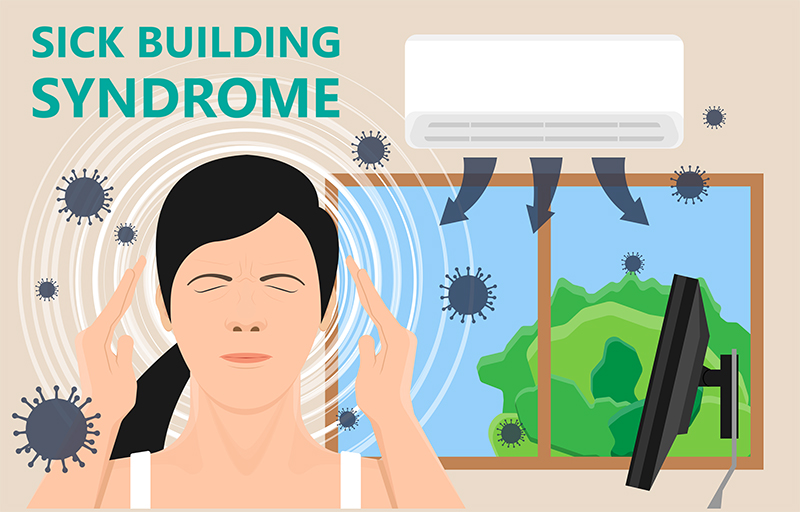Many things can affect your indoor comfort, including the quality of the air in a building. In fact, poor air quality in indoor locations is often associated with some health issues. Some of these include headaches, dizziness, and fatigue. There’s even a specific term for a link between poor indoor air quality and your health. That term is sick building syndrome, or SBS.
What Exactly Is Sick Building Syndrome?
The EPA has been looking into sick building syndrome (SBS) for a long time. They define it as an increased health concern as a result of poor air quality in a building. SBS refers to times when a wide range of health issues are affecting many occupants of a building. With SBS, there are no illnesses or underlying causes causing those health problems.
What Causes SBS?
Poor air quality in indoor spaces is the main cause of what’s referred to as sick building syndrome. Sometimes, issues with ductwork, insufficient ventilation, or your HVAC system could cause this. Additionally, some buildings, especially commercial office spaces, have no opening windows. This further contributes to poor air quality. Other factors that may contribute to SBS include:
- Older buildings with HVAC systems not equipped to handle increased airflow
- Heating and cooling systems that aren’t used to save energy
- Poor HVAC-related maintenance and upkeep
- Newer or remodeled buildings with VOCs in paint, carpeting, and other materials
What Are the Signs and Symptoms?
The poor air quality associated with SBS refers to air with high amounts of pollutants. These include VOCs, germs, allergens, and other airborne substances. These all can affect a building’s occupants’ health. Symptoms associated with sick building syndrome include:
- Recurring or persistent headaches
- Increased allergy issues and/or congestion
- Sore throat or eyes
- Coughing and/or wheezing
- Dry, itchy skin and/or rashes
- Difficulty concentrating
- Increased fatigue
How Can You Deal With and Prevent Sick Building Syndrome
One of the ways to deal with SBS is to have an HVAC professional check your heating and cooling system. This allows them to fix any indoor air quality issues associated with your equipment. It can also be helpful to make an effort to increase indoor air circulation and ventilation. Monitoring the quality of the air in your inside spaces can be beneficial. You can reduce future issues with sick building syndrome with:
- An air purification system
- Regular HVAC maintenance
- HEPA filtration to remove more airborne contaminants
- Minimizing the use of any products or materials that emit high amounts of VOCs
Call Us Today
Having a working HVAC system is a cost-effective way to improve your indoor air quality. When it comes to your indoor comfort, Thornton Heating Services is here for you. We are ready to offer our help and personalized solutions. Contact us today to schedule an appointment or discuss your concerns.

